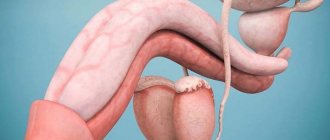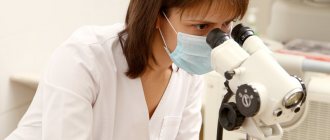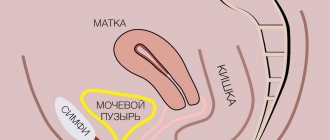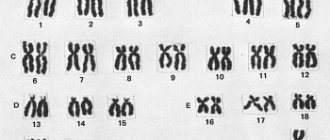To help the body cope with the inflammatory process, anti-inflammatory drugs are prescribed. They are also called non-steroidal or non-hormonal. The short name is NSAID. The first known anti-inflammatory drug is Aspirin or acetylsalicylic acid.
Such drugs have many side effects, so their uncontrolled use is not permissible. Classic NSAIDs have side effects on the digestive organs, cardiovascular and nervous systems.
New generation non-steroidal anti-inflammatory drugs simultaneously have anti-inflammatory, analgesic and antipyretic effects.
How and why does the inflammatory process occur in the human body?
Inflammation is the body's defense method, allowing it to eliminate germs, harmful substances and dead cells. The inflammatory process can begin due to many reasons, including infections caused by bacteria and viruses, the action of chemicals, and also as a result of foreign bodies entering the body.
Inflammation can be acute or chronic. In the chronic form it occurs more slowly and for a long time. The main symptoms of the inflammatory process are redness, swelling, pain, fever and loss of certain functions.
Causes of inflammation of the female genital organs
As for diseases such as vulvitis, vaginitis, cervicitis, endometritis, these are quite a lot of pathogens. These are not always specific microorganisms.
When the body's defenses decrease, opportunistic microorganisms that are normally found in the female body can also show their pathogenicity, but immune forces do not allow them to express theirs.
These include mainly staphylococcus, streptococcus, fungi of the genus Candida, and some viral particles. Of the pathogenic ones, gonococci, chlamydia, trichomonas, and others have their negative effects.
Factors contributing to inflammation
- First of all, this is the sexual transmission of both specific infections and opportunistic microorganisms.
- Violation of personal hygiene rules. Incorrect use of hygiene products.
- The presence of concomitant diseases , both inflammatory and non-inflammatory in origin.
- Using low-quality underwear that does not match the size or is made of synthetic material. Some models of underwear can cause diseases.
- Decreased immune strength of the body. One of the most common provoking factors may be foci of chronic infection or hypothermia.
- Insufficient nutrition . Especially in this case, the consumption of large amounts of simple carbohydrates and sugar is provoking.
- Diabetes mellitus is one of the provoking factors in the development of candidiasis.
Symptoms of the disease
- Among them, the most common is pain. Its characteristics can be acute or dull, aching.
- This is also a discharge from the genital tract , the nature of which varies with different inflammations, but is always pathological.
- In addition, there may be itching and burning in the genital area . In some cases, this sign of inflammation is so pronounced that it disrupts a woman’s lifestyle and leads to increased nervous excitability.
- A disturbance in the general condition may also occur ; it is expressed in the manifestation of intoxication associated with the inflammatory process, an increase in body temperature and, in some cases, a change in the functioning of organs and systems.
Forms of the disease
Firstly, I share all inflammation of the female genital organs for the reason that contributes to its formation:
- Bacterial
- Fungal
- Viral.
These are also the stages of inflammation development:
- Acute
- Subacute
- Chronic
- Latent.
Indications for the use of anti-inflammatory drugs
- Rheumatic diseases (rheumatic fever, ankylosing spondylitis, rheumatoid, gouty and psoriatic arthritis, Reiter's syndrome).
- Non-rheumatic diseases of the musculoskeletal system (myositis, tendovaginitis, household and sports injuries, osteoarthritis).
- Neurological diseases (sciatica, neuralgia, lumbago, sciatica).
- Renal and hepatic colic.
- Pain syndrome of various origins, including abdominal pain, headache and toothache, pain after surgery.
- Fever.
- Dysmenorrhea.
- For the prevention of arterial thrombosis.
What are the contraindications?
- Ulcerative lesions of the gastrointestinal tract in the acute stage.
- Severe renal and liver dysfunction.
- Individual intolerance to the main active ingredient and auxiliary ingredients.
- Pregnancy and lactation.
- Individual intolerance to drug components.
- Children under 2 years old.
Anti-inflammatory drugs should be prescribed with caution to people suffering from bronchial asthma, as well as people who have already experienced adverse reactions when taking medications. For patients with arterial hypertension or heart failure, NSAIDs are chosen that have the least effect on renal blood flow. Elderly people are prescribed the minimum effective doses of NSAIDs in short courses.
Treatment of inflammatory diseases of the pelvic organs in women
Pelvic inflammatory diseases (PID) are characterized by various manifestations depending on the level of damage and the strength of the inflammatory response. The disease develops when a pathogen (enterococci, bacteroides, chlamydia, mycoplasma, ureaplasma, trichomonas) penetrates into the genital tract and in the presence of favorable conditions for its development and reproduction. These conditions occur during the postpartum or post-abortion period, during menstruation, during various intrauterine manipulations (insertion of an IUD, hysteroscopy, hysterosalpingography, diagnostic curettage) [1, 5].
Existing natural protective mechanisms, such as anatomical features, local immunity, the acidic environment of the vaginal contents, the absence of endocrine disorders or serious extragenital diseases, can in the vast majority of cases prevent the development of genital infection. In response to the invasion of a particular microorganism, an inflammatory response occurs, which, based on the latest concepts of the development of the septic process, is usually called a “systemic inflammatory response” [16, 17, 18].
Acute endometritis always requires antibacterial therapy. The basal layer of the endometrium is affected by the inflammatory process due to the invasion of specific or nonspecific pathogens. Endometrial protective mechanisms, congenital or acquired, such as T-lymphocyte aggregates and other elements of cellular immunity, are directly related to the action of sex hormones, especially estradiol, act in conjunction with the macrophage population and protect the body from damaging factors. With the onset of menstruation, this barrier on a large surface of the mucous membrane disappears, which makes it possible to become infected. Another source of protection in the uterus is the infiltration of the underlying tissues with polymorphonuclear leukocytes and the rich blood supply of the uterus, which promotes adequate perfusion of the organ with blood and nonspecific humoral protective elements contained in its serum: transferrin, lysozyme, opsonins [16].
The inflammatory process can spread to the muscle layer: then metroendometritis and metrothrombophlebitis occur with a severe clinical course. The inflammatory reaction is characterized by a disorder of microcirculation in the affected tissues, expressed by exudation; with the addition of anaerobic flora, necrotic destruction of the myometrium can occur [12].
Clinical manifestations of acute endometritis are characterized already on the 3rd–4th day after infection by an increase in body temperature, tachycardia, leukocytosis and an increase in ESR. Moderate enlargement of the uterus is accompanied by pain, especially along its ribs (along the blood and lymphatic vessels). Purulent-bloody discharge appears. The acute stage of endometritis lasts 8–10 days and requires quite serious treatment. With proper treatment, the process is completed, less often it turns into subacute and chronic forms, and even less often, with independent and indiscriminate antibiotic therapy, endometritis can take a milder abortive course [5, 12].
Treatment of acute endometritis, regardless of the severity of its manifestations, begins with antibacterial infusion, desensitizing and restorative therapy.
Antibiotics are best prescribed taking into account the sensitivity of the pathogen to them. The dosage and duration of antibiotic use are determined by the severity of the disease. Due to the frequency of anaerobic infections, additional use of metronidazole is recommended. Considering the very rapid course of endometritis, cephalosporins with aminoglycosides and metronidazole are preferable among antibiotics. For example, cefamandole (or cefuroxime, cefotaxime) 1.0–2.0 g 3–4 times a day IM or IV drip + gentamicin 80 mg 3 times a day IM + Metrogyl 100 ml IV /in drip.
Instead of cephalosporins, you can use semi-synthetic penicillins (for abortive cases), for example, ampicillin 1.0 g 6 times a day. The duration of such combination antibacterial therapy depends on the clinic and laboratory response, but should not be less than 7–10 days. To prevent dysbacteriosis from the first days of antibiotic treatment, use nystatin 250,000 units 4 times a day or Diflucan 50 mg/day for 1–2 weeks orally or intravenously [5].
Detoxification infusion therapy may include a number of infusion agents, for example, Ringer-Locke solution - 500 ml, polyionic solution - 400 ml, hemodez (or polydesis) - 400 ml, 5% glucose solution - 500 ml, 1% calcium chloride solution - 200 ml, Unithiol with a 5% solution of ascorbic acid, 5 ml 3 times a day. In the presence of hypoproteinemia, it is advisable to carry out infusions of protein solutions (albumin, protein), blood replacement solutions, plasma, red blood cells or whole blood, and amino acid preparations [12].
Physiotherapeutic treatment occupies one of the leading places in the treatment of acute endometritis. It not only reduces the inflammatory process in the endometrium, but also stimulates ovarian function. When normalizing the temperature reaction, it is advisable to prescribe low-intensity ultrasound, inductothermy with an HF or UHF electromagnetic field, magnetic therapy, and laser therapy.
Every fifth woman who has suffered salpingo-oophoritis is at risk of infertility. Adnexitis can cause a high risk of ectopic pregnancy and pathological course of pregnancy and childbirth. The fallopian tubes are the first to be affected, and the inflammatory process can involve all layers of the mucous membrane of one or both tubes, but more often only the mucous membrane of the tube is affected, and catarrhal inflammation of the mucous membrane of the tube occurs - endosalpingitis. Inflammatory exudate, accumulating in the tube, often flows through the ampullary opening into the abdominal cavity, adhesions form around the tube and the abdominal opening of the tube closes. A saccular tumor develops in the form of a hydrosalpinx with transparent serous contents or in the form of a pyosalpinx with purulent contents. Subsequently, the serous exudate of the hydrosalpinx resolves as a result of treatment, and the purulent pyosalpinx can perforate into the abdominal cavity. The purulent process can capture and melt increasingly large areas of the pelvis, spreading to all internal genitalia and nearby organs [9, 10, 13].
Inflammation of the ovaries (oophoritis) as a primary disease is rare; infection occurs in the area of the ruptured follicle, since the rest of the ovarian tissue is well protected by the covering germinal epithelium. In the acute stage, swelling and small cell infiltration are observed. Sometimes, in the cavity of the follicle of the corpus luteum or small follicular cysts, ulcers and microabscesses form, which, merging, form an ovarian abscess or pyovarium. In practice, it is impossible to diagnose an isolated inflammatory process in the ovary, and this is not necessary. Currently, only 25–30% of patients with acute adnexitis have a pronounced picture of inflammation; the remaining patients experience a transition to a chronic form, when therapy is stopped after a rapid subsidence of the clinic.
Acute salpingoophoritis is also treated with antibiotics (preferably third generation fluoroquinolones - Ciprofloxacin, Tarivid, Abaktal), since it is often accompanied by pelvioperitonitis - inflammation of the pelvic peritoneum.
Inflammation of the pelvic peritoneum most often occurs secondary to the penetration of infection into the abdominal cavity from an infected uterus (with endometritis, infected abortion, ascending gonorrhea), from the fallopian tubes, ovaries, from the intestines, with appendicitis, especially with its pelvic location. In this case, an inflammatory reaction of the peritoneum is observed with the formation of serous, serous-purulent or purulent effusion. The condition of patients with pelvioperitonitis remains either satisfactory or moderate. The temperature rises, the pulse quickens, but the function of the cardiovascular system is slightly impaired. With pelvioperitonitis, or local peritonitis, the intestine remains unbloated, palpation of the upper half of the abdominal organs is painless, and symptoms of peritoneal irritation are determined only above the pubis and in the iliac regions. However, patients note severe pain in the lower abdomen, there may be retention of stool and gas, and sometimes vomiting. The level of leukocytes is increased, the formula shifts to the left, the ESR is accelerated. Gradually increasing intoxication worsens the condition of patients [14, 15].
Treatment of salpingoophoritis with or without pelvioperitonitis begins with a mandatory examination of the patient for flora and sensitivity to antibiotics. The most important thing is to determine the etiology of inflammation. Today, benzylpenicillin is widely used for the treatment of specific gonorrheal process, although drugs such as Rocephin, Cephobid, Fortum are preferable.
The “gold standard” in the treatment of salpingoophoritis from antibacterial therapy is the prescription of Claforan (cefotaxime) at a dose of 1.0–2.0 g 2–4 times a day intramuscularly or one dose of 2.0 g intravenous in combination with gentamicin 80 mg 3 times/day (gentamicin can be administered once at a dose of 160 mg IM). It is imperative to combine these drugs with the administration of Metrogyl IV 100 ml 1-3 times a day. A course of antibiotic treatment should be carried out for at least 5–7 days, prescribing cephalosporins of the second and third generations (Mandol, Zinacef, Rocephin, Cephobid, Fortum and others at a dose of 2–4 g/day) [14].
In case of acute inflammation of the uterine appendages, complicated by pelvioperitonitis, oral administration of antibiotics is possible only after the main course, and only if the need arises. As a rule, there is no such need, and the persistence of previous clinical symptoms may indicate the progression of inflammation and a possible suppurative process.
Detoxification therapy is mainly carried out with crystalloid and detoxification solutions in an amount of 2–2.5 liters with the inclusion of solutions of hemodez, Reopoliglyukin, Ringer-Locke, polyionic solutions - acessol, etc. Antioxidant therapy is carried out with a solution of Unithiol 5.0 ml with a 5% solution of ascorbic acid 3 times/day i.v. [14].
In order to normalize the rheological and coagulation properties of blood and improve microcirculation, acetylsalicylic acid (Aspirin) 0.25 g/day is used for 7–10 days, as well as intravenous administration of Reopoliglucin 200 ml (2–3 times per course). Subsequently, a whole complex of resorption therapy and physiotherapeutic treatment is used (calcium gluconate, autohemotherapy, sodium thiosulfate, Humisol, Plazmol, Aloe, FiBS) [3, 15]. Among the physiotherapeutic procedures for acute processes, ultrasound is appropriate, providing analgesic, desensitizing, fibrolytic effects, enhancing metabolic processes and tissue trophism, inductothermy, UHF therapy, magnetic therapy, laser therapy, and later - sanatorium-resort treatment.
Among 20–25% of inpatients with inflammatory diseases of the uterine appendages, 5–9% develop purulent complications requiring surgical interventions [9, 13].
The following provisions regarding the formation of purulent tubo-ovarian abscesses can be highlighted:
- chronic salpingitis in patients with tubo-ovarian abscesses is observed in 100% of cases and precedes them;
- the spread of infection occurs predominantly through the intracanalicular route from endometritis (with IUD, abortion, intrauterine interventions) to purulent salpingitis and oophoritis;
- frequent combination of cystic transformations in the ovaries with chronic salpingitis;
- there is a mandatory combination of ovarian abscesses with exacerbation of purulent salpingitis;
- Ovarian abscesses (pyovarium) are formed mainly from cystic formations, often microabscesses merge with each other.
Morphological forms of purulent tubo-ovarian formations:
- pyosalpinx - predominant lesion of the fallopian tube;
- pyovarium - predominant damage to the ovary;
- tubo-ovarian tumor.
All other combinations are complications of these processes and can occur:
- without perforation;
- with perforation of ulcers;
- with pelvioperitonitis;
- with peritonitis (limited, diffuse, serous, purulent);
- with pelvic abscess;
- with parametritis (posterior, anterior, lateral);
- with secondary lesions of adjacent organs (sigmoiditis, secondary appendicitis, omentitis, interintestinal abscesses with the formation of fistulas).
Clinically differentiating each of these localizations is almost impossible and impractical, since the treatment is fundamentally the same; antibacterial therapy takes a leading place both in the use of the most active antibiotics and in the duration of their use. The basis of purulent processes is the irreversible nature of the inflammatory process. Irreversibility is due to morphological changes, their depth and severity, often accompanying severe renal dysfunction [3, 9].
Conservative treatment of irreversible changes in the uterine appendages is unpromising, since if it is carried out, it creates the preconditions for the occurrence of new relapses and aggravation of impaired metabolic processes in patients, increases the risk of upcoming surgery in terms of damage to adjacent organs and the inability to perform the required volume of surgery [9].
Purulent tubo-ovarian formations represent a difficult diagnostic and clinical process. Nevertheless, a number of characteristic syndromes can be identified:
- intoxication;
- painful;
- infectious;
- early renal;
- hemodynamic disorders;
- inflammation of adjacent organs;
- metabolic disorders.
Clinically, intoxication syndrome manifests itself in intoxication encephalopathy, headaches, heaviness in the head and severity of the general condition. Dyspeptic disorders (dry mouth, nausea, vomiting), tachycardia, and sometimes hypertension (or hypotension in the onset of septic shock, which is one of its early symptoms along with cyanosis and facial hyperemia against the background of severe pallor) are noted [4].
Pain syndrome is present in almost all patients and is of an increasing nature, accompanied by a deterioration in general condition and well-being, there is pain during a special examination, displacement behind the cervix and symptoms of irritation of the peritoneum around the palpable formation. Pulsating increasing pain, persistent fever with a body temperature above 38°C, tenesmus, loose stools, lack of clear contours of the tumor, lack of effect from treatment - all this indicates the threat of perforation or its presence, which is an absolute indication for urgent surgical treatment. The infectious syndrome is present in all patients, manifested in the majority by high body temperature (38°C and above), tachycardia corresponds to fever, as well as an increase in leukocytosis, ESR and leukocyte index of intoxication increase, the number of lymphocytes decreases, the shift of white blood to the left and the number of molecules of average mass, reflecting increasing intoxication. Often there is a change in kidney function due to impaired urine passage. Metabolic disorders manifest themselves in dysproteinemia, acidosis, electrolyte imbalance, etc.
The treatment strategy for this group of patients is based on organ-preserving principles of surgery, but with radical removal of the main source of infection. Therefore, for each specific patient, the volume of the operation and the time of its implementation should be optimal. Clarifying the diagnosis sometimes takes several days - especially in cases where there is a borderline variant between suppuration and an acute inflammatory process or in differential diagnosis from an oncological process. Antibacterial therapy is required at each stage of treatment [1, 2].
Preoperative therapy and preparation for surgery include:
- antibiotics (use Cefobid 2.0 g/day, Fortum 2.0–4.0 g/day, Reflin 2.0 g/day, Augmentin 1.2 g IV drip 1 time/day, Clindamycin 2.0– 4.0 g/day, etc.). They must be combined with gentamicin 80 mg IM 3 times a day and Metrogyl infusion 100 ml IV 3 times;
- detoxification therapy with infusion correction of volemic and metabolic disorders;
- mandatory assessment of the effectiveness of treatment based on the dynamics of body temperature, peritoneal symptoms, general condition and blood counts.
The surgical stage also includes ongoing antibacterial therapy. It is especially valuable to administer one daily dose of antibiotics on the operating table immediately after the end of the operation. This concentration is necessary as a barrier to further spread of infection, since penetration into the area of inflammation is no longer prevented by dense purulent capsules of tubo-ovarian abscesses. Betalactam antibiotics (Cephobid, Rocephin, Fortum, Claforan, Tienam, Augmentin) pass these barriers well.
Postoperative therapy includes the continuation of antibacterial therapy with the same antibiotics in combination with antiprotozoal, antimycotic drugs and uroseptics in the future (according to sensitivity). The course of treatment is based on the clinical picture and laboratory data, but should not be less than 7–10 days. Antibiotics are discontinued based on their toxic properties, so gentamicin is often discontinued first, after 5–7 days, or replaced with amikacin.
Infusion therapy should be aimed at combating hypovolemia, intoxication and metabolic disorders. Normalization of gastrointestinal motility is very important (intestinal stimulation, HBOT, hemosorption or plasmapheresis, enzymes, epidural blockade, gastric lavage, etc.). Hepatotropic, restorative, antianemic therapy is combined with immunostimulating therapy (UVR, laser blood irradiation, immunocorrectors) [2, 9, 11].
All patients who have undergone surgery for purulent tubo-ovarian abscesses require post-hospital rehabilitation in order to prevent relapses and restore specific body functions.
Literature
- Abramchenko V.V., Kostyuchek D.F., Perfileva G.N. Purulent-septic infection in obstetric and gynecological practice. St. Petersburg, 1994. 137 p.
- Bashmakova M. A., Korkhov V. V. Antibiotics in obstetrics and perinatology. M., 1996. No. 9. P. 6.
- Bondarev N. E. Optimization of diagnosis and treatment of mixed sexually transmitted diseases in gynecological practice: abstract. dis. ...cand. honey. Sci. St. Petersburg, 1997. 20 p.
- Ventsela R.P. Nosocomial infections // M., 1990. 656 p.
- Gurtovoy B. L., Serov V. N., Makatsaria A. D. Purulent-septic diseases in obstetrics. M., 1981. 256 p.
- Keith L. G., Berger G. S., Edelman D. A. Reproductive health: Vol. 2 // Rare infections. M., 1988. 416 p.
- Krasnopolsky V.I., Kulakov V.I. Surgical treatment of inflammatory diseases of the uterine appendages. M., 1984. 234 p.
- Korkhov V.V., Safronova M.M. Modern approaches to the treatment of inflammatory diseases of the vulva and vagina. M., 1995. No. 12. P. 7–8.
- Kumerle X. P., Brendel K. Clinical pharmacology during pregnancy / ed. X. P. Kumerle, K. Brendel: trans. from English T. 2. M., 1987. 352 p.
- Serov V.N., Strizhakov A.N., Markin S.A. Practical obstetrics: a guide for doctors. M., 1989. 512 p.
- Serov V.N., Zharov E.V., Makatsaria A.D. Obstetric peritonitis: diagnosis, clinic, treatment. M., 1997. 250 p.
- Strizhakov A. N., Podzolkova N. M. Purulent inflammatory diseases of the uterine appendages. M., 1996. 245 p.
- Khadzhieva E. D. Peritonitis after cesarean section: a textbook. St. Petersburg, 1997. 28 p.
- Sahm DE The role of automation and molecular technology in antimicrobial susceptibility testing // Clin. Microb. And Inf. 1997; 3: 2(37–56).
- Snuth CB, Noble V., Bensch R. et al. Bacterial flora of the vagina during the mensternal cycle // Ann. Intern. Med. 1982; p. 948–951.
- Tenover FC Norel and emerging mechanisms of antimicrobial resistance in nosocomial pathogens // Am. J. Med. 1991; 91, p. 76–81.
V. N. Kuzmin, Doctor of Medical Sciences, Professor MGMSU, Moscow
Types of anti-inflammatory drugs
Modern medications cope with inflammation of any nature and have a long-lasting effect. They are often prescribed when pain needs to be relieved.
- Hormonal drugs . They have a much stronger effect than non-hormonal ones. The basis of such drugs is cortisol. They act on the principle of local immune suppression. And at the same time, such drugs have many more contraindications and side effects.
They are prescribed for severe skin allergies, rheumatoid arthritis, vascular inflammation, hepatitis, and inflammation of skeletal muscles.
- Combined means . These medications include combinations of several components. Thanks to this, the therapeutic effect is greatly increased.
- Nonsteroidal drugs . These drugs act selectively on types of cyclooxygenase, inhibiting their activity. COX is responsible for the creation of biologically active components. Due to the suppression of COX activity, the amount of these substances in tissues decreases and inflammation disappears.
Types of inflammatory gynecological diseases
Vulvitis
This is an inflammation of the outer part of the vulva. It occurs in females; girls are most susceptible to this inflammatory process.
Moreover, the frequency of this inflammation is due to the fact that the vulva has an anatomically accessible location for the penetration of an infectious factor.
Currently, several variants of the development of inflammation have been identified, among them infectious vulvitis of a nonspecific cause, as well as specific inflammation and strophic lesions associated with hormonal deficiency.
Symptoms of vulvitis
- General health is usually not disturbed , body temperature does not rise and there are no signs of intoxication.
- Some women do not even notice any symptoms, and inflammation is detected only when examined by a specialist.
- And also this is the presence of redness of the external genitalia , the addition of itching and burning.
- The discharge has a pathological inflammatory nature , it will depend on who provoked the process. Their number also depends on the development and degree of inflammation. In some cases, severe discomfort may occur, the urge to urinate, dysuria and pain may appear.
- During sexual intercourse, there is severe pain irritation, and subsequently women see the appearance of bloody discharge associated with damage to the mucous membrane. During inflammation of the vulva, it becomes swollen, loose and vulnerable.
Bartholinitis
This is an inflammatory lesion of the external genital tract - Bartholin's glands. Normally, they perform very important functions, aimed at producing mucus in the vaginal area, as well as lubrication to ensure full-fledged intercourse.
- The mechanism of infection is associated with the anatomical features of the location of the gland. This is due to the fact that the excretory duct is located in the vestibule of the vagina, so there is wide access for microorganisms to enter.
- There may be pathogens from the vaginal environment or from the surrounding space , due to the close anatomical connection with the rectum.
- In addition, in order for the pathogen to exhibit its pathogenic properties, it is necessary to act on provoking factors that contribute to a decrease in immunity, mainly local. These include shaving with someone else's tools or old blades, failure to comply with personal hygiene rules, and wearing tight underwear, especially made of synthetic materials.
- Inflammation is quite rare, mainly occurs between the ages of 25 and 35, and can often be combined with other inflammatory pathologies of the genital organs. It begins initially, usually acutely.
Symptoms:
- The appearance of severe painful irritation in the area of the vaginal opening.
- She cannot work normally, has difficulty sitting down and sexual intercourse is impossible.
- A formation can be palpated on the labia; the dimensions can vary, from 2-3 cm to 10 cm; the consistency at the initial stage is soft.
- The skin has an increased temperature compared to other areas.
If inflammation is not cured at this stage, then it later becomes chronic or develops complications such as cysts or abscesses.
When the disease turns into an abscess, the tumor has a dense consistency, the size is large in most cases, the shape is round or oval, and in some cases fluctuation appears. The general condition is disturbed, the temperature rises, signs of intoxication appear, sometimes it develops into fever. Inflammation of the Bartholin gland requires mandatory treatment.
Cervicitis
This is inflammation of the cervix. It is an intermediate area between the internal and external genitalia. In this case, the mucous membrane is involved in the pathological process. Since the cervix is divided into two main sections - the exocervix and endocervix.
The outer parts are predominantly stratified by squamous epithelium, while the inside is lined with cylindrical epithelium. It is the inflammation of the cylindrical epithelium that is most dangerous, since it increases the risk of its transfer to the uterus.
Cervicitis can be caused by various factors, including bacteria, viruses or fungi. The presence of provoking factors contributing to the development of inflammation is of great importance.
Symptoms:
- Frequently changing sexual partners without using condoms.
- The presence of sexually transmitted infections , as well as a violation of the vaginal microbiocenosis.
- Frequent hypothermia, inflammation in the vagina or uterus, as well as decreased immunity. This may be caused by the human immunodeficiency virus.
- The presence of human papillomavirus , precisely those types that are troparia to the cervix.
In most cases, cervical inflammation is asymptomatic. Therefore, it is often detected only when a woman is examined by a specialist.
Only in some cases is the presence of discharge from the genital tract. During a vaginal examination, redness of the mucous membrane, the presence of an enhanced vascular pattern, as well as focal defects of the mucous membrane are revealed. A predominantly pathological discharge appears from the external pharynx, ranging from creamy to purulent.
Cervical erosion
This is a pathological process that occurs on the outer part of the cervix. It is characterized by the presence of a defect in the mucous membrane.
This process can occur in women at any age, but the frequency increases in sexually active women.
The average age of this group is 18 - 35 years. This is due to frequent changes of sexual partners.
This pathology is especially dangerous when a human papillomavirus infection is combined with a defect in the mucous membrane.
Types 16 and 18 are considered the most dangerous; they can contribute to the development of cancer. In most cases, cervical erosion is combined with inflammation in the cervix and vagina, and may become a consequence of this process.
It is usually asymptomatic. A woman will not feel pain due to the fact that the cervix is devoid of pain receptors, which means inflammation will only manifest itself morphologically. It can only be manifested by the appearance of bloody or brown discharge, especially after sexual intercourse.
It is detected mainly when examined in the speculum by a gynecologist. You can see defects on the mucous membrane of the exocervix of the cervix; in this case, the cervix will not be uniformly smooth and pink. It appears hyperemia, hemorrhages, defects in the mucous membrane, as well as signs of an old inflammatory process.
How to take anti-inflammatory medications correctly?
First you need to carefully read the instructions. The drugs must be prescribed by the attending physician and the optimal dose and course of treatment determined. To protect the stomach, tablets should be taken with a sufficient amount of clean water.
Under no circumstances should you mix medications with alcohol. This will further affect the functioning of the stomach.
You can buy all drugs for the treatment of inflammatory processes in the network of state pharmacies “Provincial Pharmacies”. We provide medicines with a state quality guarantee. There is a pick-up system and home delivery when ordering drugs online.







